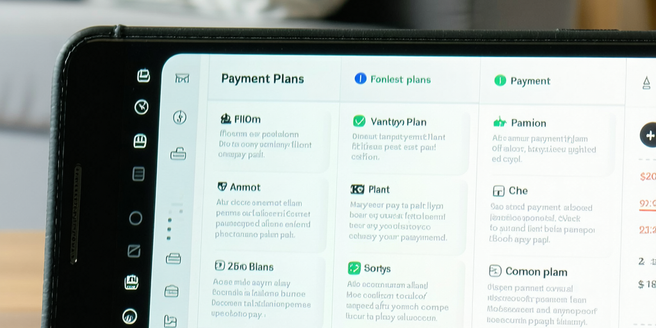
Introduction to Flexible Payment Plans
| Topic | Detail | Example |
| Monthly Payments | Distribute the cost over months | $100/month for 12 months |
| Biweekly Payments | Pay every two weeks | $50 every 2 weeks |
| Pay-As-You-Go | Pay per use or session | $5 per use |
| Interest-Free | No interest charged | 0% interest for 6 months |
| Custom Plans | Adapt to customer needs | Choose duration and frequency of payments |
| Technology Integration | Use tech for better management | Automated payments |
Benefits of Offering Payment Flexibility
Offering flexible payment plans can bring numerous benefits to businesses and consumers alike. For businesses, it helps to improve cash flow and reduce bad debt by allowing customers to pay in a way that fits their budget. This increased accessibility can lead to a broader customer base and improved customer satisfaction. Payment flexibility is also associated with increased sales conversions, as consumers are more likely to commit to a purchase if they can spread the cost over a period that suits them. Additionally, it can foster customer loyalty as consumers appreciate the accommodation of their financial situations. For customers, these plans can provide a much-needed financial relief, particularly for high-ticket items or services, making them manageable by breaking down payments into smaller, more affordable chunks.
Interest-Free Monthly Installments
Interest-free monthly installments are an attractive payment option for consumers who want to avoid the additional cost of interest while still enjoying the flexibility of spreading out their payments. This option is particularly popular in retail and service industries, where the total cost can be significant, but spreading it over several months makes it more manageable. For businesses, offering interest-free installments can be a powerful competitive advantage. It encourages customers who might otherwise postpone or forgo a purchase due to financial constraints. To implement this, businesses need a clear repayment plan while ensuring they communicate any terms and conditions upfront to avoid any misunderstandings. Interest-free plans can increase customer trust and goodwill, leading to improved brand loyalty and repeat business.
Biweekly Payment Options for Budgeting
Biweekly payment options are a compelling alternative for customers who prefer more frequent, smaller payments as opposed to substantial monthly withdrawals. It’s a great option for those who receive their paycheck every two weeks, aligning the payment schedule with their income flow. Biweekly plans can aid in budgeting, as they help customers manage their expenses more effectively without having to reserve a large sum of money for a once-a-month payment. Businesses can offer biweekly payments as an effective way to attract budget-conscious customers and create an impression of understanding and accommodating varied financial preferences. Implementing biweekly payment options requires solid administrative capabilities to track payments accurately, ensuring neither the business nor the customer faces any financial discrepancies.
Pay-as-You-Go Models Explained
The pay-as-you-go model is a flexible payment strategy where customers pay for products or services incrementally as they access them. This model is prevalent in industries such as telecommunications and utilities, where usage can fluctuate. The model provides assurance to the consumer by eliminating overpayment and ensures they pay strictly for what they use, bringing about a level of transparency. Businesses offering pay-as-you-go plans leverage the benefit of attracting customers who might be hesitant to commit due to uncertain usage. This model can increase customer engagement and retention while reducing the barriers and risks associated with upfront costs. For businesses, effectively managing a pay-as-you-go model means investing in systems for monitoring and billing usage accurately to maintain profitability and customer satisfaction.
Customizing Payment Plans for Every Customer
Customizing payment plans involves tailoring financial arrangements to suit the unique needs and circumstances of individual customers. This personalized approach can be crucial for gaining a competitive edge as it acknowledges and respects the variability in consumers’ financial situations. Businesses can offer different durations, frequencies, and amounts to suit customer preferences and financial capabilities. Customization not only enhances customer satisfaction but also increases the likelihood of successful collections as customers are less likely to default on agreements that are aligned with their capabilities. To implement custom payment plans, businesses need strong data analysis capabilities to assess risk and predict payment behaviors while maintaining flexibility in negotiation to ensure that both parties reach a mutually beneficial agreement.
Integrating Technology in Payment Solutions
Integrating technology into payment solutions can streamline operations, enhance customer experience, and improve security measures. Businesses can utilize diverse technological tools, including mobile payment apps, online portals, and automated billing systems, to simplify the payment process for both themselves and their customers. High-tech solutions reduce the administrative burden of managing payment plans, enabling real-time tracking, and simplifying reconciliation processes. Additionally, secure payment gateways increase customer confidence, reducing the risk of fraud and chargebacks. Businesses can leverage data analytics to gain insights into customer payment behaviors and adapt their offerings accordingly. The integration of technology not only reinforces operational efficiency but also empowers businesses to offer more versatile and responsive payment options to their customers.
Managing Risk and Credit Assessments
Managing risk and conducting credit assessments are critical components in implementing flexible payment plans. Offering payment flexibility means accepting uncertainty about whether all payments will be made on time or at all. Businesses need to conduct thorough credit assessments to evaluate the likelihood of a customer’s ability and willingness to pay. This involves analyzing credit scores, income, employment history, and existing financial commitments. Accurate risk management can significantly reduce the number of defaults and increase the reliability of cash flow. Businesses also need to establish clear credit policies and continuously monitor customer accounts to detect early warning signs of potential default. By employing effective risk management strategies, companies can maintain the delicate balance between offering flexibility and protecting their bottom line.
Case Studies of Successful Payment Plans
Examining case studies of successful payment plans can offer valuable insights and inspiration for businesses looking to implement or refine their own payment solutions. These examples demonstrate the positive impact of payment flexibility on customer satisfaction, sales growth, and brand reputation. For instance, larger corporations such as Apple have adopted installment plans, allowing consumers to purchase high-ticket items more sustainably. Smaller businesses, such as local service providers, have also benefited by personalizing payment structures that align with customer cash flow, driving increased loyalty and higher customer retention rates. By analyzing the strategies employed and challenges overcome in these case studies, businesses can better understand the potential pitfalls and best practices in offering flexible payment options. This knowledge can aid in crafting payment solutions that effectively balance customer needs with business objectives.
Future Trends in Payment Flexibility
Future trends in payment flexibility are increasingly influenced by technological advancements, consumer demand for convenience, and economic factors. With the rapid growth of digital payment systems, we are likely to see more automated and seamless payment experiences where consumers can manage payments through mobile apps and digital wallets, eliminating traditional barriers. There is also a growing emphasis on tailoring financial solutions and providing more personalized payment experiences. Businesses may begin leveraging artificial intelligence to predict customer payment preferences and behaviors, offering dynamic and adaptable payment plans. Moreover, as the importance of sustainability and financial inclusivity rises, companies might explore eco-friendly payment solutions that align with consumer values. To stay competitive, businesses need to remain agile and continuously innovate to meet the evolving expectations of their customers in the realm of payment flexibility.

